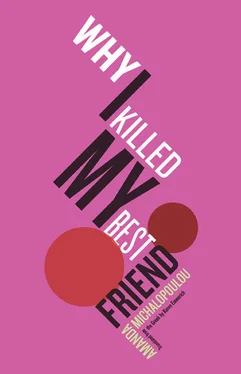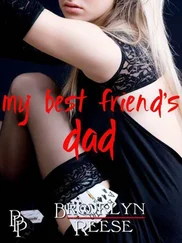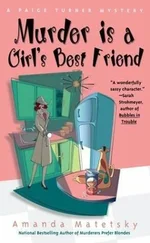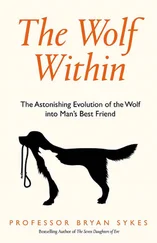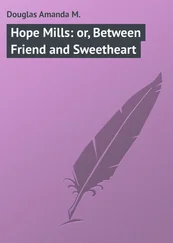The next day I find a dictionary of sociology full of terms like society, competition, adaptation—“inherited structural and functional characteristics that increase the probability of survival.” I also read about an archaeological excavation in Chiapas, Mexico. The archaeologists who went there back in the 1960s claimed that before the Mayans, a tribe called the Zoque lived on the Rio La Venta and sacrificed children in caves. I’d first heard about this from Antigone, after she took a trip to Mexico with her CEO. I rush back outside. Whenever I’m confronted with the image of a cave, even if it’s just a mental image, I want desperately to escape again into the light.
The following day I stumble across Piranesi’s imaginary prisons. The name is already familiar — from Malouhos, not from any course on eighteenth-century art. In art school we learned about far more general trends, synoptically, as if centuries were bricks to be stacked one on top of the next. The imaginary prisons are terrifying. The perspective in the drawings keeps shifting. Staircases and ladders that seem to lead upward in fact don’t lead anywhere at all. If these were plans for actual buildings, the inspectors would nix construction altogether. Piranesi seems to have devised every possible way of escaping from Plato’s cave, but in the end he pushes you even deeper down: into the captivity of an internal landscape, a nightmare with no exit.
Only this time I don’t feel trapped. I shut my eyes and travel to the place where Aristomenis Malouhos found safety. I jot down in my notebook: Is it possible to feel safe in a nightmare? Perhaps, if from the start you treat it as the site of an inner struggle. With Piranesi’s sketches you’re struggling to escape into the light. Freedom and justice are waiting somewhere inside the ruins he draws. An abyss of options. I like that .
As the week draws to a close, I read about the caves in Lascaux. A charming story: in 1940 four teenagers found a cave in the south of France with remnants of Paleolithic art, which they discovered by the weak light of a lantern. I can imagine the irrepressible curiosity they must have felt at that age: teenagers taking turns goading one another a bit further, a bit deeper. At first all they could see was a hole, most likely opened by a falling pine tree. Then the most daring of the four suggested they widen the hole by digging, though he probably wasn’t the one to start. He would have been more like Anna, a leader telling the others what to do. Soon they encountered a small cavity, and tumbled down onto a pile of stones covering the old mouth of the cave. That led them to yet another cavity, which later came to be known as the Hall of the Bulls. I can picture them holding their lantern up to the walls and seeing paintings of red cows, yellow horses, bulls, deer. How could they possibly have slept that night, and what dreams might they have had? The next day they went back and used a rope to lower themselves down through a narrow passageway. They ended up in the Shaft of the Dead Man, where a painting shows a man with a bird’s beak beside a bison with lowered head, in attack position, and what appears to be a rhinoceros. Which figure would each of them have identified with? I myself would have identified, not with either animal, or with the human, but with the particular shade of ochre used in the painting. A faded yellow, like an old jealousy. Odiosamato.
The news spread through the village and beyond. Archaeologists flooded the place. How must those four French youths have felt, having their discovery taken from their hands and transformed into a tourist site? In 1955 the paintings revolted, as Malouhos would say. They started to lose their characteristic colors. People said it was due to the carbon dioxide being released from visitors’ breath. Scientists came up with a system to control the release of carbon dioxide, but the damage had already been done: green spots of oxidation started to appear on the walls. The development of the archaeological site had upset the ecosystem, the natural development of the flora and fauna alike.
I jot again in my notebook: There comes a time when we need to leave the cave in peace. We’re guests there, not owners .
“What’s going on with you?” Kayo asks, poking his head through the crack in the door. “Are you painting?”
“Kayo, can you leave me alone for a while? Can you just listen? A- lone .”
“Okay, I get it. But Anna’s called three times today. She says for you to call her back as soon as you can.”
I lock the door of my room and regress to the time when I thirsted for black. Only now, instead of using black paper, I draw in black on a white background. Black, and ochre, too. I sketch the prehistoric animals in the Lascaux caves, as I remember them from the books I pored over at the library. Horses, bison, cows, deer. I practice doing feet and tails for a while, then start to draw little creatures in miniature. Tiny animals entering enormous caves. Or gigantic animals trying to squeeze through the mouths of microscopic caves. The mismatched proportions transport me straight into the realm of fairytale, offering me that particular comfort of children’s drawings. As a child, you’re presented with a rigid world of predetermined sizes and power relations. You lie down on the floor with a piece of paper and deconstruct it all — you draw blue roots on the trees, people with no fingers, see-through bellies with babies inside; you bestow life and take it away again with your colored pencils. With faith and with rage you change the world.
“Daphne, eyes on your own paper, please. Leave Natasha alone!”
She obeys immediately, a spitting image of the bison: head down, tongue out. Today she’s drawing a cave with babies flying all around, like little airplanes.
“Why are the babies flying?” I ask.
“They’re not babies, they’re storks. The babies come out of their mouths.”
“Who did you learn that from?”
“Svetlana. She thinks a stork is going to bring her baby. She doesn’t even know how babies are born!”
Daphne has gotten much sweeter since our tea party in her room. She became infatuated with the idea of the cave, of a place where you can hide something that’s all your own.
Today the whole class is drawing caves. Daphne has worn out their ears with stories of mud and witches — and children are natural imitators. Natasha, as always, draws rainbows all around her cave. Panos puts his whole family inside and himself outside doing cartwheels. Sandra draws a wild dog at the entrance, barking red bow-wows. Aris draws soldiers with machine guns. The mouth of his cave is full of barbed wire, and land mines are exploding in the background.
Of course none of them draw men with stockings over their faces, or headless dolls, or a child with a severed finger. To each his own cave.
She slaps the desk with her hand and her silver bangles clatter.
“Why didn’t you call me?” She’s smoking and coughing by turns. I don’t answer right away, and she stands there kicking the leg of the desk with one pointed boot.
“I want to be alone for a while,” I say eventually.
“What does that mean?”
“What does solitude mean?”
“Can we go for a coffee in that awful place across the street?”
“No, Anna. I’m busy. I’m going home.”
“I’ll drive you.”
“No, I’ll take the metro.”
“But — didn’t you say you’d never go back into the metro? After your panic attack?”
“You’re the one who said that, not me.”
“I’ll come with you, then, in case something happens.”
“No.”
No. It’s the first time I’ve ever said no to her and stood my ground. The leather of her boot is scratched from constantly kicking at the leg of the desk. It’s scary, as if her soul has dropped down into her shoe. As if she’s lost something of her shiny self-sufficiency.
Читать дальше
